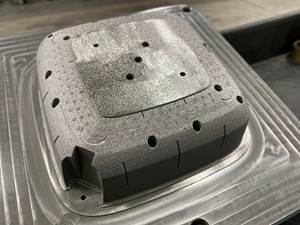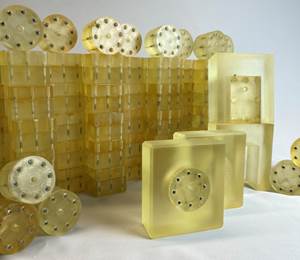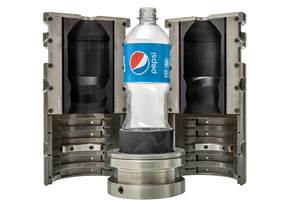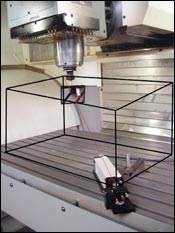Discover the Truth: Capitalize on Rapid Prototyping
Find the truth and combine the power of machining with the unique capabilities of rapid prototyping.
It may be difficult to discover the truth about rapid prototyping's performance and capabilities. It may be challenging to cross over the competitive lines that have been drawn between additive and subtractive processes. It may be easy to justify not using rapid prototyping. However, in a business climate where every gain, improvement and advantage is necessary to remain competitive, these obstacles must be overcome.
Regrettably, the rapid prototyping industry has overstated claims of speed, quality and cost. Little white lies, omissions, half-truths and exaggerations have become self-propagating. This has served to elevate expectations, create disgruntlement and fuel opposition. Yet, rapid prototyping is a powerful tool that delivers amazing benefits to companies of all sizes in all industries. There is no need to exaggerate what these systems can do, but the practice continues.
Looking past the exaggerations and discovering the truth opens the door to process improvement. Rapid prototyping and machining are not competitive technologies. They are complementary solutions. Companies of all sizes are discovering that a hybrid approach to manufacturing challenges is the best practice. Find the truth and combine the power of machining with the unique capabilities of rapid prototyping.
The Early Years
The bold claims of the early 1990s fueled disappointment and riled a powerful foe. "Overnight Prototypes," claimed an advertisement in 1991. The headline grabbed attention, but it also created unreasonable expectations. For at that time, three to seven days was typical for the delivery of rapid prototypes.
In addition to overnight, the industry forecasted rapid growth to a billion dollars and the replacement of NC/CNC machining. The machine tool industry is huge, and it represents tens of thousands of people who have vested interests. By making these bold claims, the rapid prototyping industry evoked reaction from machine tool vendors, CAM vendors and, more importantly, the entire community of toolmakers and machinists.
Instead of positioning rapid prototyping as a complementary tool, it was positioned as a replacement to conventional techniques. This threatened the livelihood of manufacturing professionals. Seeking justification for the continued use of machining technologies, those with vested interests fought back. Seeking ammunition to shoot down the new technology, the machine tool industry easily determined that the declaration of overnight prototypes was untrue.
Armed with proof of false allegations, the machining community had all the justification that it needed. Having exposed the truth about speed, it was simple to create doubt about all other claims, whether or not they were true. With the risk and expense, most chose to avoid adoption of the new technology called rapid prototyping.
Taking on the machine tool industry also forced the hand of the rapid prototyping vendors. Since the industry set its sights on the replacement of machining, it had to compete with it on other issues such as accuracy, surface finish and material costs.
The Current Situation
Although rapid prototyping can now deliver overnight prototypes, there are many other claims that continue to be overstated. Perhaps the most notable and most common is the claim of accuracy. Over the years, ±0.005 in. (0.127 mm) has become a defacto standard. Yet, systems cannot deliver this quality for every part and every feature on each prototype.*
As with overnight, the accuracy statement is easily disproved. And as with other embellishments, the claim gives those in opposition to rapid prototyping all the justification that is needed to reject the technology.
The omissions, half-truths and exaggerations extend into all aspects of the technology. Exaggerations of quality include surface finish, repeatability and material properties. There are omissions on material cost, acquisition expense and operating expense. Time is subject to half-truths on build speed, total leadtime and the amount of labor required to make a rapid prototype a showpiece.
The problem is that many of the claims have become standards upon which to evaluate the technologies. When competing for the sale of a rapid prototyping system, vendors found that it was easier to adopt the exaggeration rather than educate the buyer as to the truth. Service bureaus also found that to be competitive they had to promise the same level of quality as that claimed by vendors. So, ±0.005 became the benchmark upon which to measure technologies, and it became the truth.
However, the truth is so easy to disprove. This creates shadows of doubt. Those who buy and use rapid prototyping are in technical disciplines that demand the facts. As soon as truth is shown to be fiction, doubt is cast. The choices become: accept all other claims as fact; expect other claims to be fiction and deal with the consequences; or investigate and research each of the claims that will affect success. However, the business environment and individual traits make the issue of doubt, and the demands for fact-finding, serious barriers to technology adoption.
With tight budgets, lean workforces, much to do and little time to do it, people and organizations become more conservative. These pressures heighten the common traits of resistance to change and risk aversion, and they feed the inherent desire for job security. Rapid prototyping, even after 17 years, is still viewed as a new technology that is risky. With so little time and money, and so much work to do, many seek to justify status quo and reject change.
The Work Environment
Now, consider the work environment in light of the exaggerations. For those that believe that rapid prototyping is the right thing to do, the fear of surprises and the effort required to unearth the facts may cause them to abandon their plans. For those that are in opposition to rapid prototyping, the prevalence of exaggerations offers ample justification in the campaign against change. In the majority of cases, there is just too much work, effort and risk to implement this new technology when so many unknowns exist.
For those that succeed in justifying rapid prototyping, the untruths can be damaging. Imagine spearheading the initiative and promising deliverables and corporate gains only to find that the truth was fiction. Imagine learning that the desired results are not possible or are only possible with significantly more labor, cost, time or secondary processes. Imagine standing before those that authorized the purchase request and informing them that more is needed or less is possible. Imagine the agony of the alternative—making the technology work in any manner possible.
Exaggerated claims have created obstacles to the growth of rapid prototyping. Yet, as thousands of companies worldwide have shown, the technology is a powerful tool in design and manufacturing. The technology, even with its limitations, can deliver fantastic benefits, and it can return a positive ROI in a few months.
Rapid prototyping is not competitive to CNC machining; it is complementary. Let CNC handle the +0.001 / -0.000 inch (+0.025 / -0.00 mm) requirements. Use rapid prototyping for the complex geometry that cannot be machined. Give technical buyers what they need to make the recommendation to adopt the technology. It is time to break the cycle of deceit and let the truth be told. Whether the application is prototyping, tooling or manufacturing, the hybrid solution that combines the best of each technology is the best solution.
*Although there are technologies that can consistently deliver this accuracy, these are limited to small parts or are constrained by excessively long build times.
Related Content
A 3D Printing Retrospective
A personal review of the evolution of 3D printing in moldmaking throughout the past 25 years.
Read MorePrecision Meets Innovation at IMTS 2024
After attending IMTS, it's clear that the integration of advanced technologies is ready to enhance precision, efficiency and automation in mold manufacturing processes. It’s a massive event, so here’s a glimpse of what the MMT team experienced firsthand.
Read MoreIn "Hybrid" FIM Process, 3D Printing Complements Injection Molding
Alpine Advanced Materials used a desktop 3D printer and the freeform injection molding process to reduce prototype tooling production time and cost for its customers.
Read MoreHow Hybrid Tooling Accelerates Product Development, Sustainability for PepsiCo
The consumer products giant used to wait weeks and spend thousands on each iteration of a prototype blow mold. Now, new blow molds are available in days and cost just a few hundred dollars.
Read MoreRead Next
The Role of Materials in Additive Fabrication
RP capabilities continue to expand with the development of new materials.
Read MoreHow to Use Continuing Education to Remain Competitive in Moldmaking
Continued training helps moldmakers make tooling decisions and properly use the latest cutting tool to efficiently machine high-quality molds.
Read MoreAre You a Moldmaker Considering 3D Printing? Consider the 3D Printing Workshop at NPE2024
Presentations will cover 3D printing for mold tooling, material innovation, product development, bridge production and full-scale, high-volume additive manufacturing.
Read More
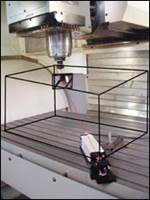









.jpg;maxWidth=300;quality=90)



